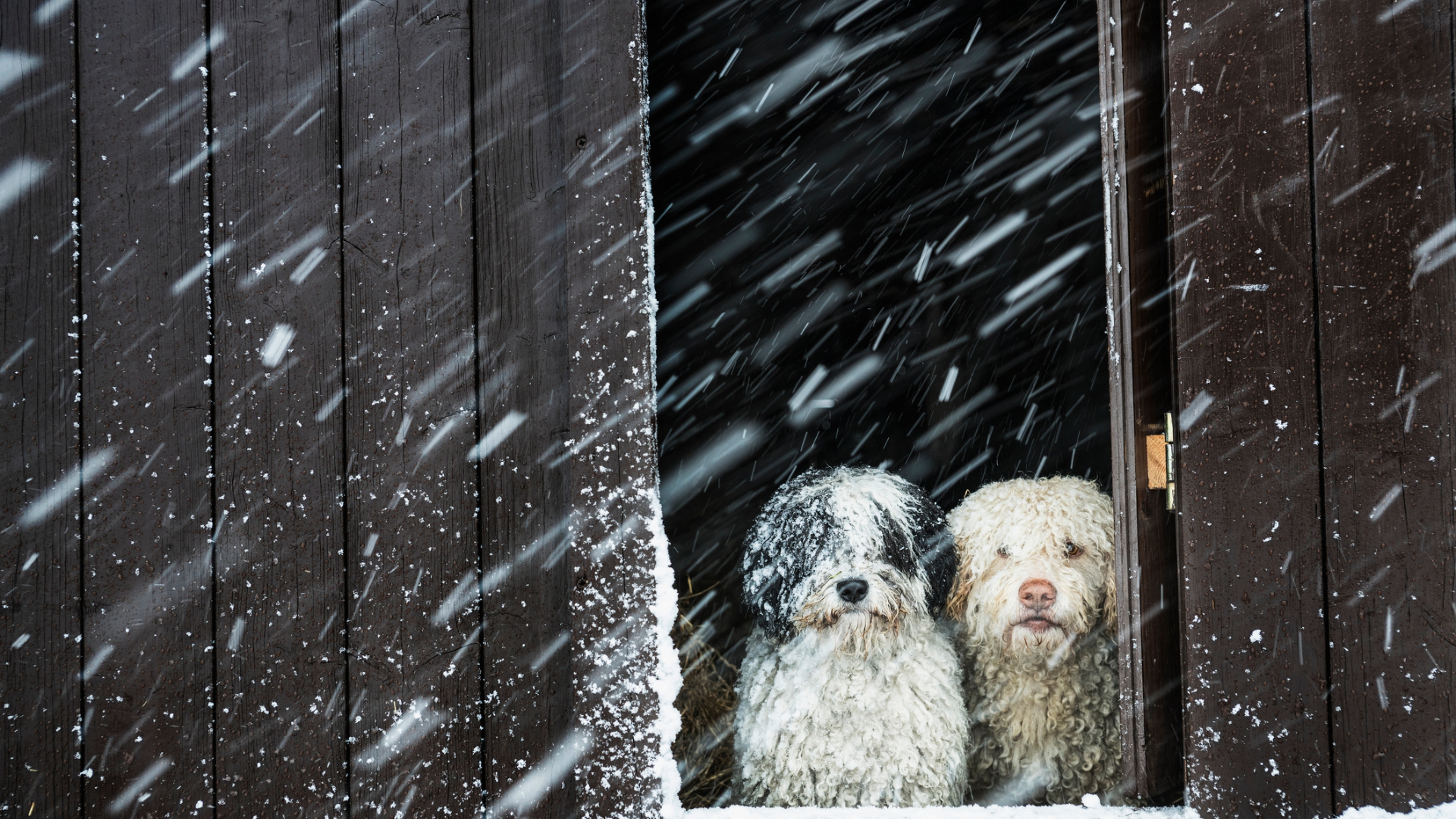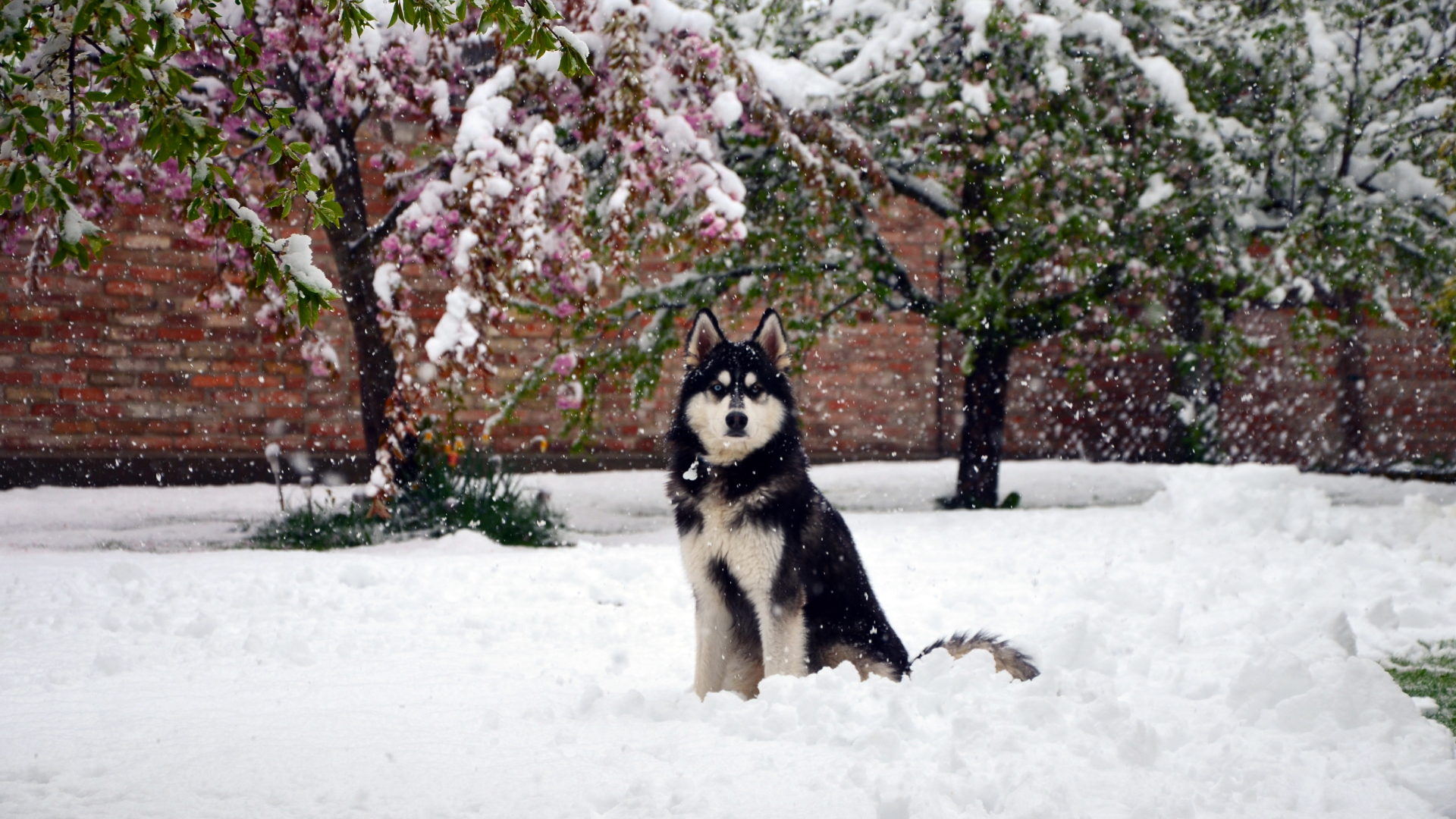
Frostbite in dogs is a serious condition. It occurs when the skin and underlying tissues are exposed to freezing or extremely cold temperatures for a prolonged period of time. It can be a life-threatening emergency if it is not treated promptly.
Any dog can develop frostbite, but our furry friends with short coats and those living in harsh winter conditions are at a higher risk. Owners must be aware of the dangers of this condition and how to keep their canine companions safe. There are lots of ways to keep your dog warm this winter, like investing in one of the best heated pet beds or one of the best dog coats.
Below, expert vet Dr. Emma Chandley has explained the causes, symptoms, and treatment of frostbite in dogs. Emma is a practicing vet with over 13 years of experience in small animal surgery and medicine and she has been a dog owner her entire life.
What is frostbite in dogs?
Frostbite in dogs is a condition that occurs when the skin and underlying tissues freeze due to extended exposure to cold temperatures. It is a medical emergency that can lead to tissue damage and even loss of parts of the body if it is not treated promptly.
When the temperature goes below freezing (32°F or 0°C), your dog's body tries to preserve heat and stay warm by narrowing the blood vessels near the skin. This helps keep the blood flowing to the important parts of the body. If your dog is exposed to low temperatures for a long period of time, this protective mechanism backfires to a certain extent as the blood flow is restricted to the extremities.
The combination of a lack of blood flow and exposure to the extreme cold means that the tissues can freeze. This causes severe injury to the tissues and if left untreated it can cause irreversible damage. Frostbite is most likely to happen in parts of the body that are far away from the heart and that have a large surface area exposed.

Causes of frostbite in dogs
Frostbite is caused by prolonged exposure to extremely cold temperatures. When your dog is placed in these conditions for too long, blood flow is reduced to the extremities and frostbite occurs.
There are a few factors that can influence the development of frostbite, these include:
- Medical conditions that affect blood flow in any way such as heart disease and diabetes in dogs.
- The size of the dog – smaller dogs are more likely to be affected due to their surface area to volume ratio.
- Dogs with shorter fur are more vulnerable as they have less insulation.
- Dogs with wet fur will develop frostbite faster.
- Elderly or very young dogs are more at risk as both these ages often struggle to produce and maintain body heat.
- Dogs with lower body fat are more likely to develop frostbite as they have less insulation.
- Dogs that spend long periods of time outdoors during cold periods are at a higher risk.

How to prevent frostbite in dogs
Tips for preventing frostbite in dogs include:
- Monitor for signs of frostbite: Owners should be able to recognize the initial signs of frostbite and keep checking regularly for them. Signs include pale or bluish skin, coldness to the touch, and stiffness or swelling.
- Protect exposed areas: You can use pet-safe paw balm and dog boots on your dog's paws to help protect them from the cold.
- Shelter: Make sure your dog always has a place to shelter and access to a warm, dry area during cold weather.
- Limit outdoor exposure: When the temperature drops to below-freezing levels, it's best to keep your dog indoors or limit outdoor time to short periods.
- Coats: Consider using one of the best dog coats or sweater to provide additional warmth.
How do you know if your dog has frostbite?
It's important that owners are able to recognize the signs of frostbite as soon as they start to develop. Frostbite can lead to serious complications if left untreated.
Here are some common signs of frostbite in dogs:
- Discoloration of an area – usually pale with a bluish tinge. This sign is most noticeable in areas such as the ears, paws, tail, and nose.
- Pain when touching the affected area – here are the signs a dog is in pain.
- Stiffness of the affected area..
- Swelling of the affected area
- Blisters or sores on the skin of the affected area.
- Licking or chewing the affected area.
- Black/unusual dark skin and dead tissue.
If you see any of these signs it's very important to seek veterinary attention immediately. Early treatment and intervention can help prevent further damage and complications.

How to treat frostbite in dogs
If you suspect that your dog has frostbite, you should take them to your vet immediately. Do not try to treat at home as it is very easy to cause further damage if parts of the body are heated up too quickly.
You can keep your dog warm by wrapping them in a towel or blanket. Do not rub the skin or try to warm your dog with a direct heat source such as a hair dryer. This can do more damage than good.
Your vet will examine your dog and treat them accordingly. If they have frostbite, they may be suffering from hypothermia and shock too, these need to be addressed quickly.
Your vet will start to gradually heat up the frostbitten areas. This can be extremely painful so usually, they will give a painkiller to help your dog cope.
Often antibiotics are required to treat secondary bacteria infections. If there is a lot of dead tissue the skin can become infected easily. In severe cases, if there has been lots of damage to the affected body part, surgery may be required to remove dead tissue. In extremely bad cases, amputation is necessary.
How long does it take for a dog to get frostbite?
The amount of time it takes for your doggo to develop frostbite depends on factors such as their breed, size, and general health status, as well as the severity of the cold and exposure to wind and moisture.
In extremely cold conditions, even a short period of exposure can be enough to cause frostbite. In these circumstances, it can develop in as little as 15 minutes. In less severe conditions, it can occur over hours or days.
In areas of higher altitude, frostbite may develop quicker due to a decreased amount of oxygen in the atmosphere.
You might also want to read: Do dogs get cold? What temperature is too cold to walk your dog? or Can dogs get a cold or flu?







